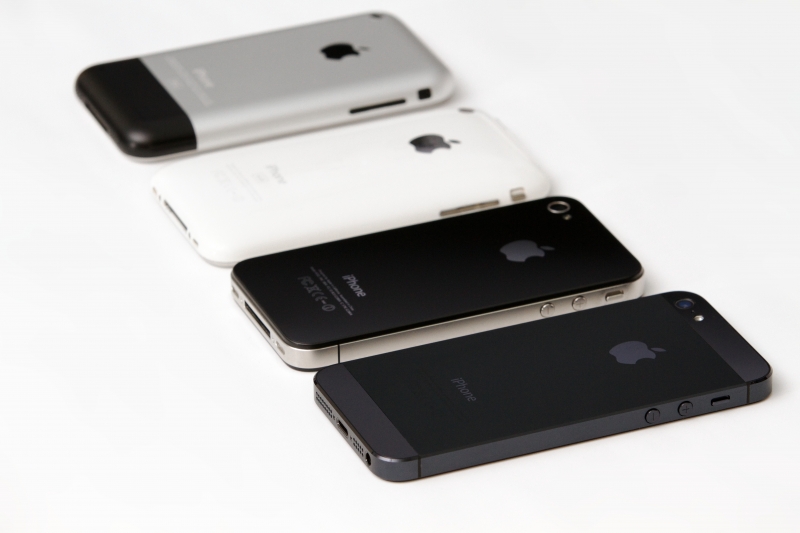September 22 marked the beginning of fall, and for some, that means it’s officially apple-picking season. Coincidentally, this isn’t the only type of apple officially in season. September 22 also marked the release date of Apple’s iPhone 8. And it’s not too long until you have your pick of a new Apple product with the release of the iPhone X on November 3.
 |
For those Apple users out there, you are not alone in experiencing technical glitches that conveniently introduce themselves once a new iPhone release date approaches. These may not be pure coincidences, but perhaps evidence of “planned obsolescence.” Planned obsolescence is a business strategy whereby a product is intentionally designed and scheduled to regress in functionality in order to compel future purchases by consumers. Apple iPhones are not the only products suspected of planned obsolescence; personal electronics and home appliances (including printers, light bulbs, and refrigerators) may also have intentionally shortened life spans.
Environmental and Social Impacts
Planned obsolescence contributes to a culture of wastefulness by perpetuating a “buy new and buy often” mentality and limiting consumer autonomy to keep products longer by hard-wiring a “self-destruct” button in products. In a world with finite resources for creating these products and storing the resulting waste, how is planned obsolescence perceived when it comes to environmental law and social responsibility?
There is compelling evidence that the negative impacts of planned obsolescence are significant. Consider the facts for a noteworthy subset of electronic waste, cell phones, in the United States alone:
- 95% of U.S. adults own cell phones and 77% use smartphones.
- The average usage life of a smartphone in the United States is less than 2 years.
- In 2010, 141 million smartphones were discarded in the United States, 89% of which went to landfills.
Smartphones only account for a fraction of e-waste. According to UNEP, 40 million tons of e-waste is produced globally each year.
The negative social impacts of creating these products are staggering. Many of these products require highly specific metals and materials, which are commonly acquired by mining, an inherently environmentally destructive process.
Additionally, the extraction of these materials brings numerous social inequity repercussions. Several materials used in electronic products are considered “conflict minerals,” or minerals purchased from conflict-zones that contribute to funding civil war and perpetuating human rights abuses. Sixty percent of the world’s cobalt (a conflict mineral used in lithium batteries) is in the Democratic Republic of the Congo. In this country, cobalt mining is likely to compromise workers’ health and safety and involve child labor or other human rights abuses. Amnesty International has linked world leading businesses (including Sony, Apple, Volkswagen, and Microsoft) with using conflict minerals in their products. Planned obsolescence guarantees demand for these conflict minerals, while the higher volume of production can make it more difficult for businesses to monitor the sources of materials.
How Do We Address This Issue?
Strategies for addressing this issue can be broadly summarized into two approaches: 1) reducing the prevalence of planned obsolescence as a business practice; and 2) reducing the negative socio-environmental externalities that stem from planned obsolescence.
One approach for deterring planned obsolescence is to create legal penalties. Last month, France had its first legal action against planned obsolescence with an anti-planned obsolescence environmental organization, Halte à l’Obsolescence Programmée, filing a lawsuit against major printing manufacturers Brother, Canon, Epson, and HP. The plaintiffs alleged that the companies had violated France’s Energy Transition for Green Growth Act of 2015, which made planned obsolescence an offense punishable by two years in prison and a fine of €300,000 (US $355,800) or up to 5% of the annual revenue of the offending party.
Another approach is to expand the recycling of electronics. New York’s Electronic Equipment Recycling and Reuse Act “requires manufacturers to provide free and convenient recycling of electronic waste…to most consumers in the state.” ELI is collaborating with the New York State Department of Environmental Conservation (NYSDEC) to educate manufacturers on their obligations under these laws. A webinar on Manufacturer Obligations Under New York e-Waste Law was held this past summer on July 31, and ELI will be co-hosting a second workshop with NYSDEC in New York on November 15.
Lastly, technological innovation can reduce the environmental impact of planned obsolescence by helping industries create more eco-friendly electronic products. For example, Stanford researchers are exploring eco-friendly alternatives to electronic materials, including developing organic, biodegradable electronics.
Final Thoughts
While ending planned obsolescence altogether is appealing from a consumer standpoint, in terms of mitigating its negative social and environmental impacts, sustainable adaptation (green technology and better e-recycling infrastructure) may prevail in effectiveness. Planned obsolescence is not just a business strategy but a lifestyle to which many consumers have subscribed. Even if products were designed to last, social driving forces like “perceived technological obsolescence, social status, and superficial damage” will compel consumers to continue to buy the newest and best. With this in mind, ending planned obsolescence alone may not be sufficient unless other strategies that better reflect current consumer habits are also employed.
